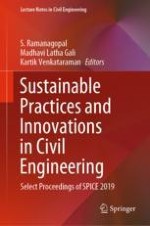2021 | OriginalPaper | Chapter
A Novel Technique on Improving the Strength of Concrete Using Microorganisms
Authors : S. Lokesh, Ahaned Noorani, S. Sanjay, G. Dhanalakshmi, S. Swaminathan
Published in: Sustainable Practices and Innovations in Civil Engineering
Publisher: Springer Singapore
Activate our intelligent search to find suitable subject content or patents.
Select sections of text to find matching patents with Artificial Intelligence. powered by
Select sections of text to find additional relevant content using AI-assisted search. powered by
